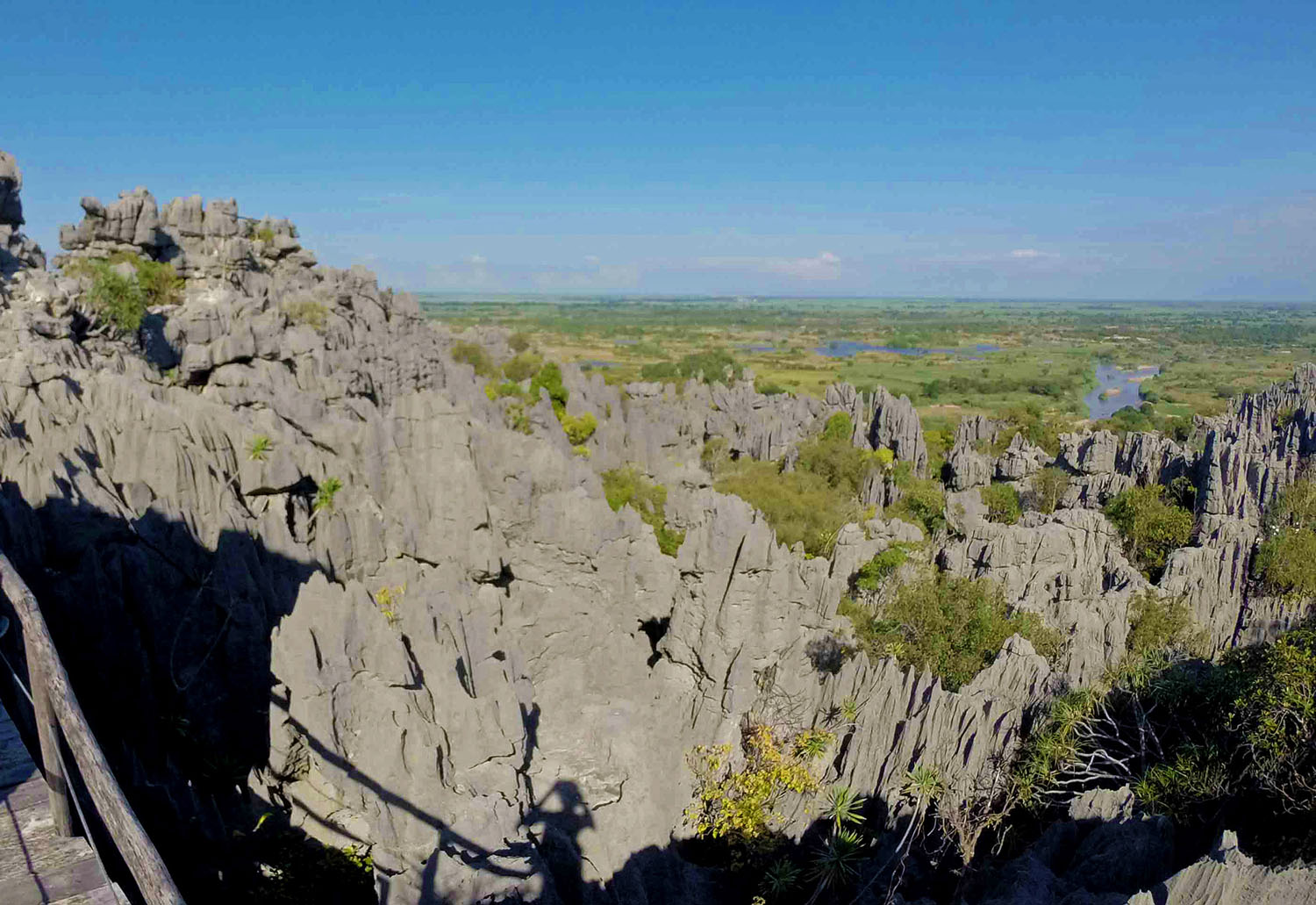Tsingy, Amber Mountain, Wildlife & Indian Ocean
Madagascar
£1,850
Ankarana Special Reserve is the venue Madagascar's best known tsingy landscape; and home to one of its most iconic animals: the Crowned Lemur (Eulemur coronatus) .
Whilst Ankarana is not as large as the Tsingy de Bemaraha in Madagascar's western dry forest, it is more accessible, being within range of both Nosy Be and the far northern town of Diego Suarez.
For a more detailed explanation of what tsingy is, visit our page: What is Tsingy and how is it formed? In a nutshell, tsingy is a dramatic rock formation, appearing like a forest of often razor-edged limestone. Tsingy is not a formation you can normally wander across - it is simply too sharp. This has enabled pockets of vegetation to become preserved natural islands, harbouring rare lemurs, chameleons, plants and birds.
From a scenic perspective, Ankarana provides some of Madagascar's most rewarding walking. Views over the ever-changing forms of the tsingy are spectacular. In places like the Big Tsingy of Benavony, you can enjoy far reaching views over the canopy of limestone pinnacles, with dense real forest behind. Suspended walkways allow us to walk safely across the top of sharp rock pinnacles where incredibly, some full-grown endemic trees manage to take root and provide a disturbance of colour amongst the light grey rock.

Up close, you can see and feel how thousands of years of erosion have shaped the rock, with its very narrowest edges resonating if you tap them. Musicians have even managed to create music by tapping out notes on the rocks. It sounds something like a xylophone (Christian HOLL, Xylophone de Pierres).
Ankarana's tsingy is as spectacular beneath as it is above. Ankarana has the longest known cave systems both in Madagascar and Africa, with caves like La Grotte d'Andrafiabe and Mandresy requiring lamps in order to reveal a world of stalagmites and stalachtites. The entrance is beautifully decorated with endemic palms, whilst deep inside a species of Cave Fish (Glossogobius ankaranensis) survives without any eyes at all. Living in total darkness, eyes have ceased to be of use, opting instead for 'sensory bumps' or neuromasts, which are clusters of hairs which are highly sensitive to movement in water.
Wildlife of Ankarana
There is lots more nature besides cavefish at Ankarana, protected over the eons from human disturbance by virtue of its sharp rocky defences. Crowned Lemurs are its most famous and easiest to see lemurs, but a total of 10 species find refuge here. Sanford's Lemur (Eulemur sanfordi) is another possible sighting, whilst more difficult to locate are Perrier's sifaka (Propithicus diadema perrieri), the Aye-Aye (Daubentonia madagascariensis), the Northern Sportive Lemur (Lepilemur septentrionalis), the Brown Mouse Lemur (Microcebus rufus), Eastern Woolly Lemur (Avahi laniger), Fat-tailed Dwarf Lemur (Cheirogalus medius), Fork-marked Lemur (Phaner furcifer) and the Western Lesser Bamboo Lemur (Hapalemur griseus occidentalis).
Fossil evidence shows that whilst the tsingy provides a great degree of protection to what lives there now, several of Madagascar's largest lemurs have all existed at Ankarana, but have since become extinct. These include the largest surviving lemur, the Indri, which we only find further south now. The largest species to have existed here was a type of Koala Lemur, which measured up to 1.5 metres in length. These, like other lemurs larger than the Indri, were eaten to extinction.
Almost one third of birds resident in Madagascar are found at Ankarana, along 14 species of bat. This is half of all bat species found in the country. One of the bat species we can most commonly show you is Madagascar's smallest fruit bat, called the Madagascan rousette (Rousettus madagascariensis).
All in all, Ankarana is a great place to experience some of what is most unique about Madagascar; easily combined with the Montagne d'Ambre National Park on our tailor-made Northern Tsingy, Amber Mountain, Island & Wildlife safaris.
Suggested reading
Lemurs of the Lost World: exploring the forests and Crocodile Caves of Madagascar by Jane Wilson (2013)